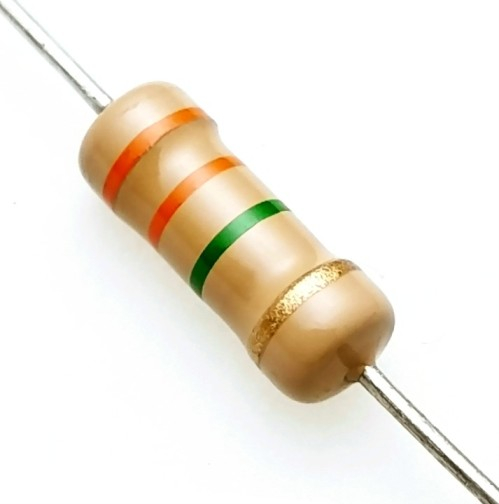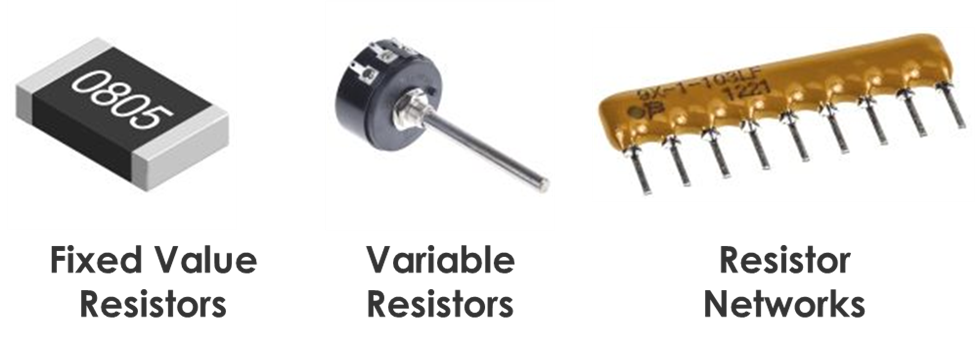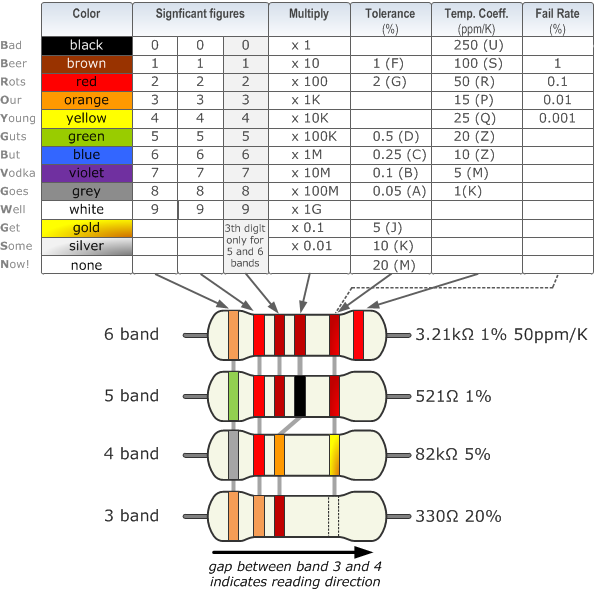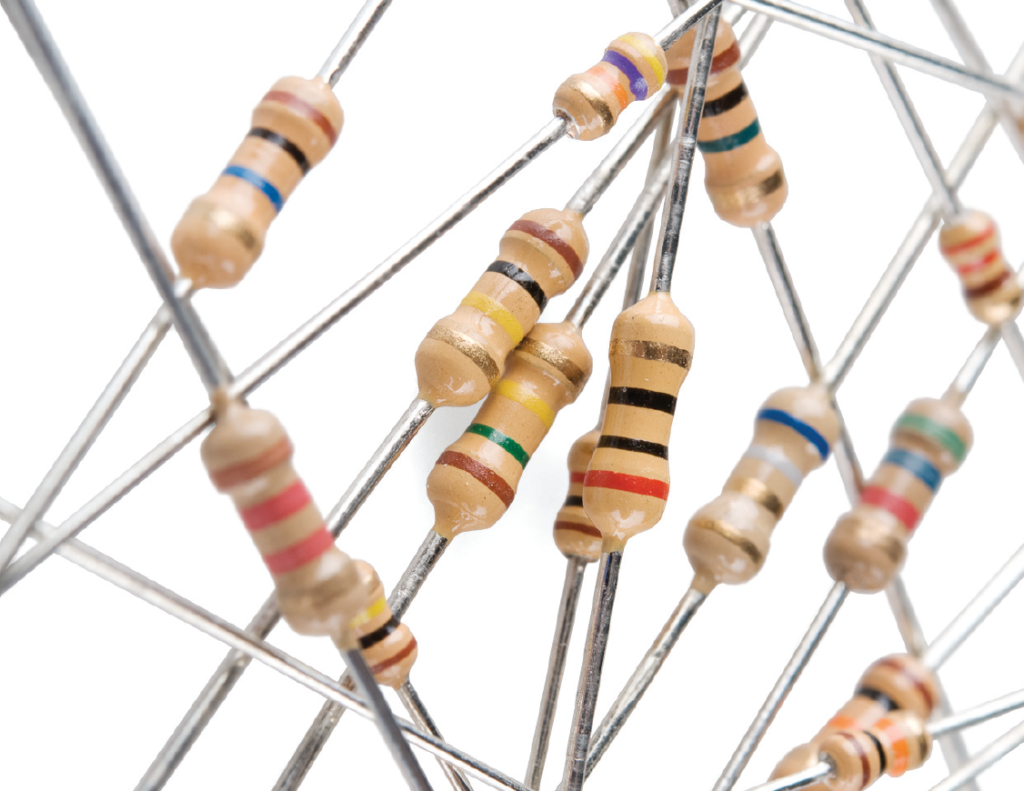Guide to Resistor Values – Finding the most cost-effective resistor after calculating the required value and tolerance is often all that’s required for engineers. So, why are there so many distinct varieties of resistors? The resistor value is read from the line closest to the end of the resistor. They’ll have either 4 or 5 bands, depending on the model.
On the Linquip website, among the many options available to you, you will find all the information you need to know about the Resistors, as well as information regarding this marketplace. You can count on Linquip to provide you with as much general and reliable information about this topic, whether you’re a professional or a customer looking for a proper company. We recommend you review a list of all Resistor Products available in Linquip. You can also be encouraged to visit Resistor for Sale and find the most suitable device based on your applications and demands.
The Resistor and its Symbol in a Circuit
The function of a resistor is to slow down the passage of electricity via a circuit. In order to better understand how it works, it is helpful to think of current as water flowing through a hosepipe and a resistor as a restriction in the pipe.
It’s likely that you already know Ohm’s law, V=IR. A resistor has a value of R if the voltage applied to it is less than I and the current through it is less than V. To deal with resistors, you need to understand this equation, which describes the relationship between current, voltage, and resistance (and other passive components).
Microscopic analysis reveals that resistors are constructed from a wide range of materials that are conductors, but imperfect ones, such that the atomic structure of the materials used hinders the flow of electrons. It is possible to fine-tune the resistance by manipulating the conductor’s properties, such as the conductivity, surface area, and lengths of the material utilized. Ohms are the standard unit for measuring resistance, and their symbol is Ω.

What Do Resistors Do in a Circuit?
In a circuit, resistors serve several purposes. Most uses, which are listed below, call either a series or parallel arrangement of numerous resistors to accomplish their intended tasks. Resistors are used in a variety of contexts, but some of the most popular ones include:
- Conflicts might arise. When many resistors are connected in series, the voltage across the junction is determined by the ratio of their individual values. Many circuits rely on this capability to produce intermediate voltages.
- Resistors with a bias. Setting up the appropriate AC and DC operating characteristics and gain levels is essential for the proper operation of transistors and other devices. Multi-resistor biasing is the method used to achieve this.
- Measures of op-amp gain and feedback. Gain and feedback in most op-amp systems are controlled by external resistors rather than the amplifier chip itself.
- Impeding the flow of current. Resistors are a common component of electronic circuitry because of their ability to regulate current flow. In many circuits, such as when controlling the brightness of an LED by regulating the current flowing into it, this is an essential safety feature.
- Equalizing impedance. The impedance of the transmit and receive ends of a circuit should be the same for maximum power transfer at high frequencies. There is a good chance that resistors can fulfill this need.
- Here we are, measuring at the moment. Since measuring voltage is significantly simpler than measuring current, it is standard practice to use a resistor in a circuit to “generate” a voltage (recall Ohm’s law) in order to determine how much current is going through the circuit.
- A pullup resistor for the data and address bus. When used with high-speed computer buses, this feature aids in lowering noise levels. When a data bus tri-states or is driven high, a pull up is used to force the bus into a known state or to ensure that the bus’s output high is well beyond the switching point of other logic units on the bus.
Types of Resistors
As a result of their versatility, resistors may be fabricated from a wide variety of materials, each of which has its own set of benefits and drawbacks. To begin, it’s important to think about the different configurations that are possible before diving into the materials.
Resistors with Constant Resistance
As their name implies, this design of resistor has a constant resistance value and is by far the most common. While you can find a resistor in whatever ohmic value you need, the great majority of the time the value can simply be “tweaked” in the circuit. All manufacturers will, therefore, provide resistor families, where a fixed number of resistors are available for each decade of value.
The E24 family, for example, is rather prevalent. There are 24 possible outcomes, ranging from $100 to $1,000 or $10,000 to $100,000. We’ve selected these numbers for the range to cover a wide variety of scenarios, taking into mind the tolerances associated with each. With tolerances as low as 0.1%, the E192 series offers a wide range of values to meet your needs. The price of the resistors may rise as a result of this.
Changing Resistors
The value of a variable resistor (potentiometer) can be adjusted by rotating a shaft or, in the case of pre-set pots, by twisting a screwdriver.
A three-terminal gadget is a variable resistor. Wipers are used to adjust the fixed resistance at the central pin shown with an arrow. These gadgets take the shape of a movable contact sliding down a resistive track or, in the case of multiturn devices employed as panel controllers, a tightly wrapped wire. Potentiometers (or “pots”) are important for fine-tuning resistance levels in a circuit, but they can cause issues if their specifications are off.
Circuits Made of Resistors
Multiple resistors of the same value are frequently required, for instance in data bus pull up applications. Single inline (SIL) or dual inline (DIL) resistor packages are available for purchase for use in these situations. They can be sold in a package with all of the resistors disconnected from each other, or with only one pin from each resistor linked to a single contact. This approach may be more expensive on a per-resistor basis, but it can still be cost-effective because it requires just a single insertion during installation. As a result of this thought process, dual resistors are now sold in a single package for use as a divider.

Resistive Materials
Having covered the fundamentals of resistor design and the different configurations, we will now examine the resistor materials and emphasize their salient features.
Carbon Film Resistors
Due to its low tolerance and high noise characteristics, carbon film resistors are no longer commonly used in general purpose applications. Even yet, there are still niche uses for them.
To make the resistor, a carbon layer is grown on a ceramic base. There are a number of benefits to doing this. There are three main benefits to this design: first, the film is mainly non-inductive; second, the ceramic is a superb insulator for heat and electricity; and third, the layout has a wide cross-section. Their huge cross-section allows for higher working voltages and more transient resistance than many other kinds, and their low inductance makes them ideal for high-frequency applications. Because of this, they are still freely accessible despite their decreased popularity.
Metal Film Resistors
Making metal film resistors involves depositing a thin layer of metal, such as ruthenium, over an electrically insulating base. They come in a wide variety of shapes and packaging, and their design makes them more amenable to mass production and more compact than carbon film resistors.
Due to its reduced noise, tighter tolerances, and typically superior temperature coefficients, metal film resistors have essentially supplanted carbon film resistors in most common applications. Even though they are commonly thought of as a “standard” resistor, they have progressed from a lower performance basis to the point where they are now available with relatively high accuracy (0.1%) and low TCRs in the single-digit PPM/C range. In addition to through hole resistors, surface mount (chip resistor) versions of metal films are also available.
Wirewound Resistors
Tolerances considerably better than 0.01% and very low-temperature coefficients (TCR) make wirewound resistors appealing in specialized applications like high precision instrumentation.
They’re the go-to resistors when power output needs to be high (examples rated up to 100s of watts are available). Wire looped around an insulated core is an inductor, therefore these resistors are not ideal for high-frequency use and are not typically manufactured as surface mount components.
Metal Oxide Resistors
In contrast to metal film resistors, the resistive element in these products is an oxide (often tin). Subtly different from metal film performance, they tend to fare better in high-voltage and high-power settings.
But the ranges are often narrower, and the tolerances and TCRs may be lower. They come in both through-hole and surface-mount varieties.
Metal Strip Resistors
These specialized resistors are typically implemented in power supply for the purpose of sensing current flow. As their ohmic values are often rather small, manufacturers make them with small temperature coefficients and moderate power dissipation so as to not significantly alter the performance of the circuit as a whole.
In essence, they are just a thin metal strip that has been cut to size using a laser. Since these devices may be transporting significant currents, they must also have a high thermal conductivity to allow for efficient heat dissipation.
Resistor Value Marking
The value of most resistors is clearly labeled. This is only one of numerous potential configurations for surface-mount resistors. They can be either three or four-digit codes employing a value and multiplier scheme to indicate the value. For instance, 102 would stand for 102 or 1kΩ, but 1002 would be 100 × 102 or 10kΩ if it were a 4-digit number. One such example of a low-value expression is 4R7, which is 4.7Ω. In this case, R serves as a decimal place.
Even more so now that SMD resistors are available in tighter tolerances and a wider range of values, the tiny size of surface resistors makes them difficult to see. It is for this reason that the EIA96 standard is employed. As a result, the value may be specified with a minimal number of digits by using a lookup table in which a three-digit value points to a value and multiplier.

Resistor Color Code
When dealing with through-hole resistors, the process is simplified slightly. There’s been a color system in existence for a long time, and it’s still in use now. The utilization of the system is depicted in this diagram. Each resistor’s value is represented by three or four bands, plus a tolerance band. The first two bands of a 4-band resistor contain numerical values, whereas the third band has a multiplier.
A resistor value of 22KΩ would be appropriate if, for instance, the first two bands were red and the third band was orange. The resistor’s tolerance would be 2% if the fourth band was red as well. Consider a 5-band resistor in which the first three colors are red, the fourth is brown, and the value is 2.22KΩ.
FAQs about Guide to Resistor Values
What does a 5% resistor mean?
Every resistor has a tolerance rating expressed as a percentage. A 5% tolerance applies to the resistor shown above. Consequently, the actual ohm value may be +/- 5% from the stated number.
Is a 1 or 5 resistor better?
If the last color band is the tolerance ratings you’re looking for, then the resistors with the lower tolerance value are preferable. For instance, if you want to know that your resistance number is accurate, look for a tolerance of 1% rather than 5% or 10%.
Why do we use a 1K resistor?
These 1K ohm resistors are great for use as pull-ups, pull-downs, and current limiters, and are frequently seen on breadboards and other prototype tools. You shouldn’t have any trouble employing these resistors in your next project because their thick-lead versions fit into a breadboard with very little wiggle room.
Conclusion
You may acquire all the details you want about the Resistors and details about this market on the Linquip website, one of the numerous possibilities available to you. Whether you’re a professional or a client seeking for a reputable business, you can rely on Linquip to give you as much basic and trustworthy information on this subject. We advise you to look through the whole range of Resistor Experts and take advice from our professionals. If you need any services required for your product, you can count on Linquip and visit Resistor Services.
Download PDF for Guide to Resistor Values
You can download the PDF format of this post from the link provided here.
Buy Equipment or Ask for a Service
By using Linquip RFQ Service, you can expect to receive quotations from various suppliers across multiple industries and regions.
Click Here to Request a Quotation From Suppliers and Service Providers
Read More on Linquip
- Variable Resistor∶ Learn The Basics, Get The Most out of It!
- A Quick Guide to Resistor Color Code
- What is Pull-up and Pull-down Resistors? + Typical Application
- Mastering Resistance Calculations: A Comprehensive Guide for Electrical Enthusiasts
- A Quick Guide to Resistor Sizes and Packages
- What is Braking Resistor? (A Practical Guide)
- What Are Resistors for LED Circuits? (Clear Guide)
- Everything You Need to Know About Variable Resistor Function
- Variable Resistor Symbol։ Everything You Need to Know
- Types of Resistor: Classification, Application, and Finally Clarification
- What is Shunt Resistor? + Function & Applications



